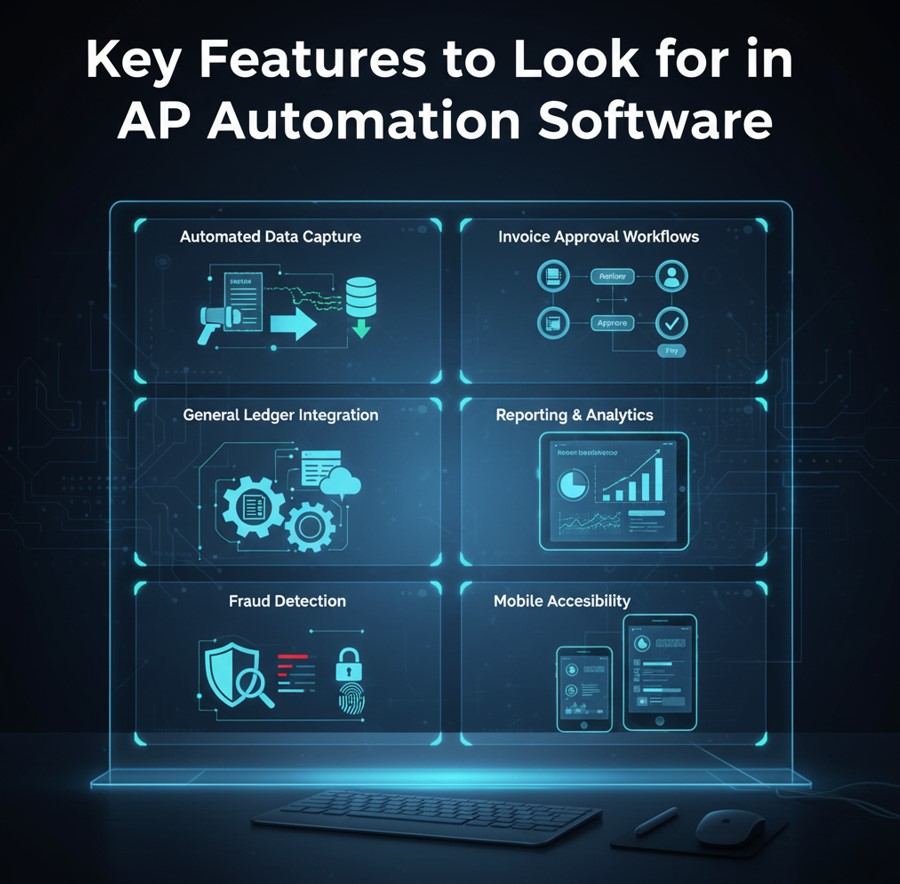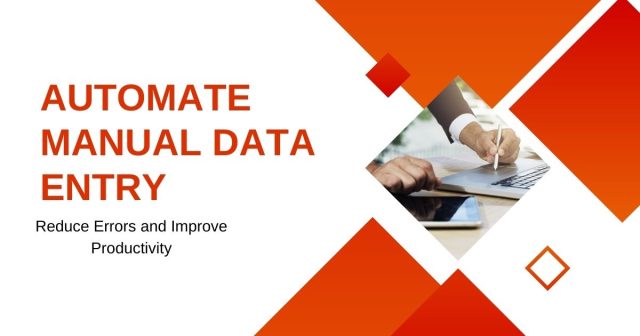This is a familiar pain point for Accounts Payable (AP) professionals. From issuing invoices to tracking payments and managing compliance, it often means stacks of paper, spreadsheets, or cumbersome manual workflows. Manual data entry, in particular, is one of the most tedious and mistake-prone tasks that can slow down your AP process. But here’s the good news–AP departments across the globe are seeing the light of automation as a game-changer.
This guide will guide you through the pitfalls of manual data entry in Accounts Payable and how you can save up to 30% of your existing process time, reduce mistakes, and leave you with opportunities through automation. From what key features can be found in automation software, to the implementation challenges you may face, this is everything you need to know to modernize your AP process.
The Problem with Manual Data Entry in AP
Data entry in AP is like running a marathon with a heavy backpack. Sure, it is possible, but it is slow, far from efficient, and riddled with pointless obstacles. AP professionals need to spend considerable time and effort to key in the invoices, cross-verify the details, follow up for approvals, etc.

Common Issues with Manual Data Entry
- High error rates: Typos, misplaced decimal points, or incorrect vendor information can lead to payment delays or even compliance issues.
- Time-intensive processes: Manually entering data consumes hours of valuable time that could be spent on strategic activities.
- Limited scalability: A growing business means an increasing number of invoices. Manual processes struggle to keep pace.
- Frustrated teams: Repetitive and tedious tasks lead to disengaged employees and potential burnout.
For modern AP departments, manual data entry is no longer sustainable in a competitive and fast-paced business environment.
Understanding the Costs: Time, Errors, and Missed Opportunities
What seems like a minor inconvenience often snowballs into much larger costs for your organization. Let’s break it down.

Time Loss
It’s estimated that processing just one invoice manually can take 8-10 minutes on average. Multiply that by hundreds or thousands of invoices per month, and you’re looking at a massive time sink.
Error Costs
Studies show that 3.6% of invoices contain errors when entered manually. Correcting these issues costs time and resources. Even worse, mistakes can lead to duplicate payments or vendor disputes, tarnishing business relationships.
Missed Opportunities
Time spent on manual work often comes at the expense of strategic tasks like negotiating vendor terms, analyzing cash flow, or identifying cost-saving areas.
Businesses also incur hidden costs like delayed approvals, which may lead to missed early payment discounts. A lack of real-time insights can hinder decision-making and affect financial health.
Benefits of Automating Data Entry in AP
Automation isn’t just about eliminating manual work; it’s about transforming your AP department into a productivity powerhouse.
1. Save Time
Automation software can capture, process, and validate invoice data within seconds, allowing your team to focus on high-value tasks.
2. Reduce Errors
With Optical Character Recognition (OCR) and AI-powered data validation, automation tools significantly reduce the risk of errors.
3. Improve Cash Flow
Automatic reminders, approvals, and early payment tracking ensure timely payments, helping businesses take advantage of discounts and improve vendor relations.
4. Boost Productivity
Streamlined workflows mean that AP staff can spend less time on admin tasks and more time analyzing financial data or implementing cost-saving strategies.
5. Ensure Compliance and Security
Automation platforms often come equipped with audit trails, fraud detection, and compliance tools to keep your business protected.
Key Features to Look for in AP Automation Software
A reliable AP automation tool doesn’t just replace manual processes; it elevates your entire workflow. Here are the must-have features:

- Optical Character Recognition (OCR): Extracts data from invoices automatically.
- AI and Machine Learning: Learns from past invoices to improve matching and reduce errors.
- Integration Capabilities: Works seamlessly with your ERP or accounting software.
- Customizable Approval Workflows: Aligns with your organization’s approval processes.
- Real-Time Reporting & Dashboards: Provides actionable insights and better visibility into payments.
- Data Security: Offers features like encryption and role-based access to ensure compliance.
- Mobile Access: Enables approvals and notifications on the go.
Step-by-Step Guide to Automating Your AP Process
Step 1. Evaluate Your Current AP Process
Start by mapping out your current AP workflow. Identify bottlenecks, redundant tasks, and areas prone to errors.
Step 2. Choose the Right Software
Compare automation software providers based on features, ease of use, pricing, and compatibility with your existing tools.
Step 3. Implement and Customize
Work with your software provider to set up the automation platform. Customize workflows, approval hierarchies, and integration with your ERP or accounting software.
Step 4. Train Your Team
Provide comprehensive training to your AP staff to ensure a smooth transition and effective use of the software.
Step 5. Roll Out Gradually
Start with a pilot program for a specific set of vendors or transactions, then scale the rollout after resolving initial challenges.
Step 6. Monitor and Optimize
Use dashboards and analytics from the software to monitor performance. Continuously tweak and improve processes for better efficiency.
Overcoming Challenges in Automation
While the benefits are clear, automation also comes with its challenges:
- Change Resistance: Employees may resist adopting new processes. Ensure clear communication about the benefits and provide hands-on training.
- Complex Integrations: Some legacy systems might struggle to integrate with modern automation platforms. Work with a reliable provider to ensure compatibility.
- Initial Costs: The upfront investment can be daunting, but consider it an investment that delivers ongoing returns through long-term efficiency and savings.
Case Studies: Success Stories of AP Automation
Case Study 1:
Another mid-sized retail organization saved close to 60% of its invoice processing time by using an AI-enabled AP automation software. We were able to prevent manual errors, which saved them more than $50,000 a year in late fees and duplicate payments.
Case Study 2:
For example, a global logistics firm eliminated a laborious multi-step approval process through intelligent automation, reclaiming 2,500 hours every year and improving vendor satisfaction rates.
These are just a few of the success stories that demonstrate how AP automation can change the game, regardless of industry or company size.
The Future of AP: AI and Continuous Improvement
A/P automation is just the start. With our newfound understanding of Artificial Intelligence, what we are really stepping into is an age of predictive analytics and refinement. AI tools will soon automate data entry while also predicting cash flow trends, recommending optimization strategies, and flagging risks proactively.
For organizations, it equates to putting your best foot forward in a data-centric marketplace.
Take Control of Your AP with Automation Today
Forget about Manual Data Entry in Accounts Payable! Automating your AP processes will create efficiencies that save you time, minimize errors, and elevate your team to be a strategic contributor to your organization’s prosperity.
Why wait? Learn More About AP Automation & Get Started Today. Discover the impact automation can have on your workflow and much more. Experiment with smart tools that make your work easier and resolve issues as potential










